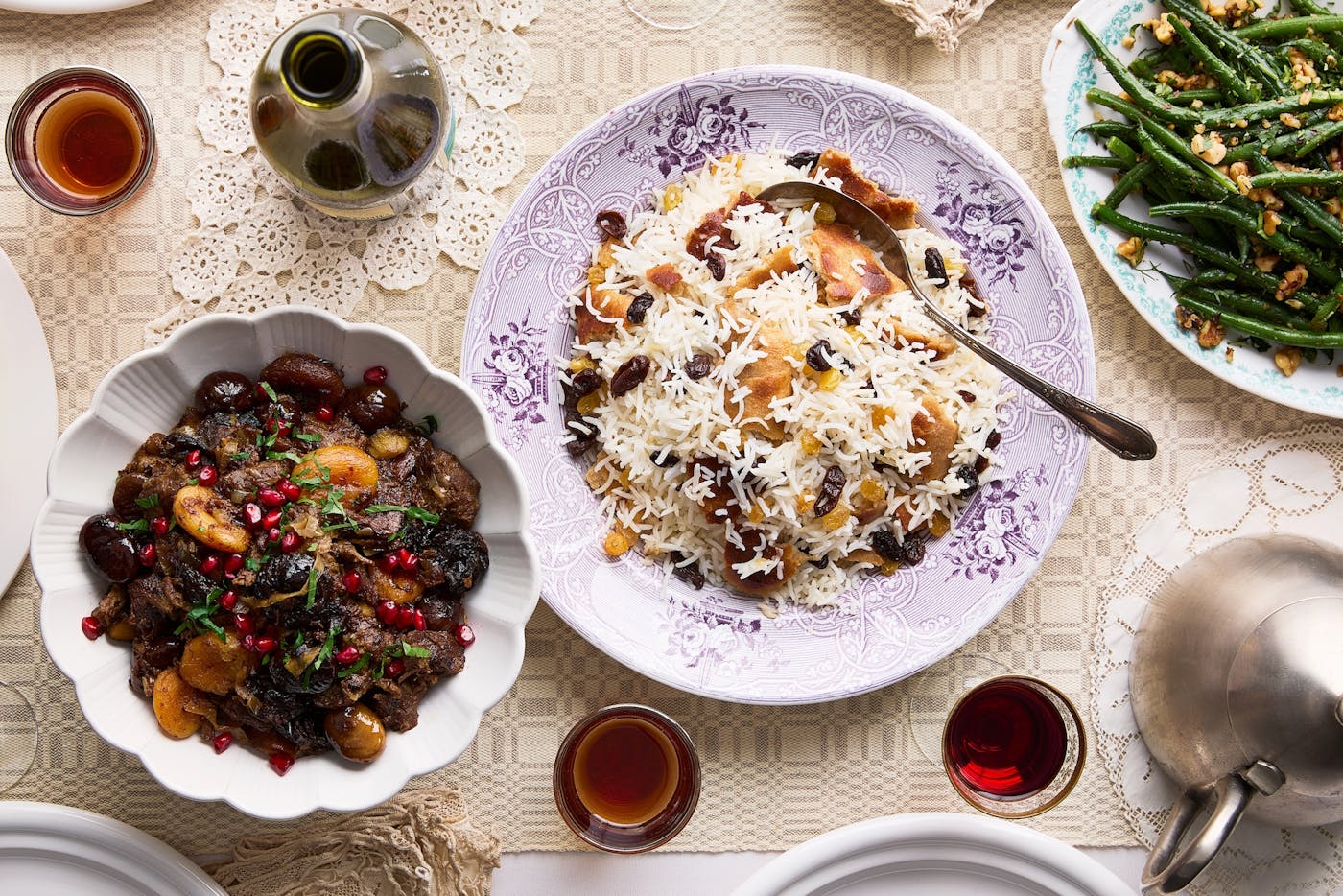Shared by Elliot Fonarev


Elliot Fonarev is a PhD candidate in sociology and a non-practicing lawyer. Here, he shares his family’s journey in his own words.
“Everyone makes plov a little bit their own way,” my father told me over the phone a few months ago. We were discussing the rich rice and meat pilaf that’s a signature dish in parts of the former Soviet Union. He learned to make our family’s version with lamb and chestnuts from his aunt in Sumqayit, a city on Azerbaijan’s Caspian coast.
He first made it when he was at university in the 1980s in Kazan, a city in the region of Tatarstan, then in the central USSR. Students from across Kyrgyzstan, Tajikistan, Kazakhstan, Uzbekistan, Ukraine, Belarus, and Russia shared communal meals showcasing their own familiar version of plov, breaking up the monotony of their usual dormitory potato diets.
For as long as I can remember, papa’s plov was the star of the dinner table at every special occasion — birthdays, New Year’s Eve (called Novy God or Нoвый гoд in Russian), and family visits. It traveled with us from Kazan where I was born, through early childhood in Jerusalem, and to Toronto where I grew up. Other recipes came too, like shuba (sometimes known as “herring in a fur coat”), a popular Novy God ‘salad’ from the Soviet era with layers of herring, potatoes, carrots, and beets sealed with mayonnaise and sour cream. The bean dish lobio that originated in the Caucuses (Kavkaz/Кавказ) was also part of our culinary canon; as was after-dinner tea with sweets like my babushka Mila’s pakhlava, an Azeri variety of baklava.
At family gatherings, our dinner table often reflected not only our intercontinental family story, but also the diversity of the places that my family has called home — Ukraine, Azerbaijan, Russia, Israel, and Canada.
My father’s parents both settled in Azerbaijan in the 1930s as children, their families leaving famine and hardship in Ukraine. Before my grandmother died at the age of 88, she recalled to me that Jewish life was long-established in Azerbaijan and Jews were protected during the second World War. Growing up through the 1930s-1950s, her chief concern was surviving poverty and famine with a single mother after her father died fighting for the Soviet Army. There was “no butter, no bread, no meat. We'd have some soup with salt and potato. There were shortages after the war too — we had rations for everything,” she told me.
My father, the youngest of three sons, told me a different story of Jewish life in the Soviet Union of the 1970s and 1980s: “Our tradition was killed — we had to hide that we were Jewish. The first time I learned I was Jewish was around the age 10. No one talked about it.” With national quotas on the number of Jews who could enter university, he was encouraged to conceal his identity.
When the Soviet Union dissolved in 1991, my immediate family followed relatives to Israel, along with the majority of the Jewish citizens of Azerbaijan. And a few years later, my parents led the extended family convoy to Canada.
Like many 1.5- and second-generation Torontonians, I spent my youth trying to assimilate into “Canadian” culture and my early adulthood trying to find my roots. While I grew up with friends from all over the world doing similar soul searching, my parents found Russian-speaking circles of post-Soviet expats. Most of their friends were Jewish, but had never kept Shabbat or kosher, and had no interest in organized religious life. Still, they gathered for Jewish holidays and the Russian New Year over tables of dishes from across the vast space of the former Soviet Union. Living their own distinct brand of Jewish life, they have contributed to creating a distinct Russian-speaking Jewish subculture.
In the years since my grandmother Mila’s death in 2018, I have been trying to renew my own Jewish traditions, including rediscovering practices like Shabbat that were lost to Sovietization. This winter, I borrowed my father’s old aluminum Kazan cooking pot and set about making plov for a Shabbat dinner for my chosen family.
While the holiday has become a meaningful ritual in my life, food has always been a reminder of family and cultural history for me. Bringing these together and reflecting on my father’s words reminded me that food, like Shabbat, is always a reflection of those who have come together to honor and enjoy it. For this Shabbat dinner, I made tradition a little bit my own way.
